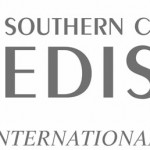Quick, who knows what PRC 4291 is?
Here’s a hint — homeowners are supposed to be in compliance with it everywhere in California where there is a threat of wildfire.
Okay, I know the old-timers up here got it, but in case you are new to these altitudes, this is the statewide code for fire code compliance, otherwise known as the “Defensible Space” law.
This law requires fuel reduction within a hundred feet of any structure in the Wildland-Urban-Interface. It divides the hundred feet into two zones: a firebreak within 30 feet of the house and a reduced fuel zone from 30 to 100 feet from the home.
The first 30 feet are crucial, and should have no dead vegetation in it — no fallen leaves or needles, no dead branches, dead grass or shrubs, nothing to connect a creeping fire to the house.
In the reduced fuel zone, leaves should not exceed 4 inches in depth. Allowances can be made on steep slopes where erosion is a problem. This zone should also have proper spacing for trees and shrubs, both vertically and horizontally. There are formulas for this, but the key is to not have shrubs packed together so that you could not walk between them, and that shrubs should not be growing under tree branches, which allows fire to easily move up from the shrub to the tree.
Some other points are that leaves and needles should not be on the roof, dead branches should not overhang the house, and no branch should be within 10 feet of the chimney. Trees should be pruned from the ground up to at least six feet. This will limit the possibility of fire moving up the tree from low hanging branches.
The law is very common sense, and designed to slow or stop the spread of fire, and to protect the lives of residents and fire fighters.
As some readers know, the Mountain Communities Fire Safe Council applies for grants to help homeowners make their properties fire safe and in compliance with 4291. These grants come from the California Fire Safe Council, which distributes federal dollars, mainly from the U.S. Forest Service, for fire prevention.
Our most recent grant of this kind is due to end on June 30 of this year. If you are considering fire abating your property and need help doing so, you should give us a call right now, 659-6208. We did not receive a grant for 2013, so when this grant is done we will not have abatement funds until another funding cycle arrives, hopefully in 2014.
This grant was for $200,000, which is now the upper limit on funds for any one grant through the CFSC. Thus far 97 homeowners have participated, representing 73 parcels and 41 acres of land, for a total of $101,576. As with all these grants, we will need to use all the remaining money by June 30 or return it to the CFSC.
If you need help with fire abating your property, now is definitely the time to give us a call. The people who work with homeowners, our project managers and the local contractors we use, are all very skilled and experienced, and know how to make a property both fire safe and attractive. If you need serious tree work done, thick manzanitas thinned, or roofs cleaned, call us soon to get on the list.










